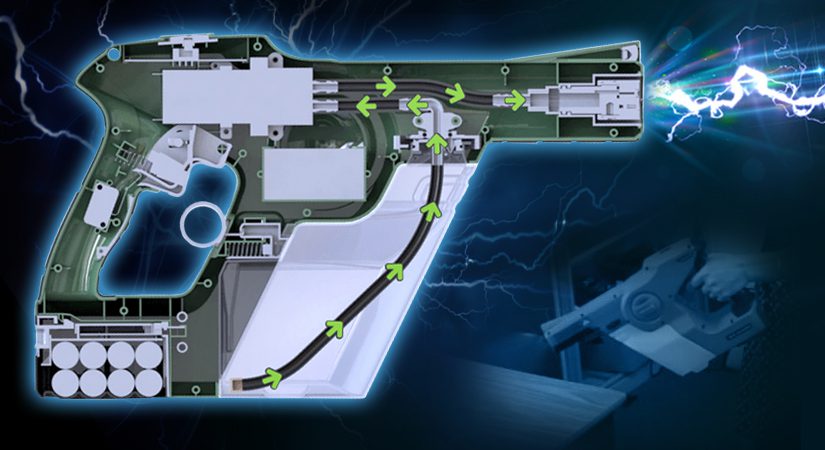Amidst all of the changes in Janitorial products and technology over the years, one thing that has mostly remained the same is the application of chemical solutions. There have been attempts to improve the process in the past, but none that have truly made the act of applying chemical more effective than traditional spray bottles and pump-up sprayers, mops or machines such as walk-behind scrubbers. In recent history however, the cleaning world has been taking a page from the paint and farm industries by adopting electrostatic sprayers as a much more efficient way to apply liquids. Breakthroughs in this technology have provided more affordable options than the three or four thousand dollar units that have traditionally been used, making a rational case for mainstream adoption.
The agricultural industry has been using electrostatic technology for decades as a way to ensure that pesticides are thoroughly applied while avoiding product waste. Previously, farmers were experiencing a loss of approximately fifty percent of their chemicals to the soil while their crops were still not being consistently protected. Not only were they still losing productivity to insects, they were also posing a threat to their soil and the environment as a whole. Meanwhile, painters were experiencing as much as a seventy-five loss of product in the application process, with only a quarter of the paint being sprayed actually covering the surface. Both of these industries needed a better solution, and it came in the form of electrostatic technology.
By atomizing a chemical at the point of application while giving it an electrical charge you are creating an attraction of each droplet to a neutral surface. Since these drops all share the same charge, they will repel each other while being drawn to the target surface ensuring a more even and thorough coverage. This charge (commonly known as an electrostatic charge) will cause the chemical to “wrap†around objects, covering the majority of the surface including the back side, underneath and irregularly shaped protrusions that were previously being missed. Pesticides were now seeking every uncovered inch of the plants and clinging to the underside of leaves. Paint was seeking out uncovered surface area and no longer being wasted as overspray. It was only logical to apply this technology to other industries suffering from similar problems.
The process of disinfecting and/or sanitizing a surface requires the chemical to sit on that surface for approximately ten minutes (this varies slightly depending on the product being used) before killing all of the bacteria and viruses that they are designed to eliminate. If a disinfectant chemical is not applied to every square inch of an object it will only work on areas that are covered, leaving the uncovered areas covered with potentially harmful bacteria. By using electrostatic technology in the application of disinfectants, we can now cover a larger area in a much shorter time. This not only means that our schools and hospitals are more effective in eliminating cross-contamination and the spread of illness, it also saves these organizations a significant amount of money in labor and materials.
One of the biggest perks in using this technology is that there is no extra training required. As long as the sprayer is pointed at the correct surface the charged particles do the rest. All that is needed is the proper tool to drastically improve the productivity of the product being used and the person using it. There are now handheld sprayers that use this technology costing under six hundred dollars, which is quickly made up in the cost-savings that users of electrostatic application experience. This seems like a no-brainer for organizations who are looking to get more from their budgets while reducing the spread of illness and greatly decreased absenteeism.

